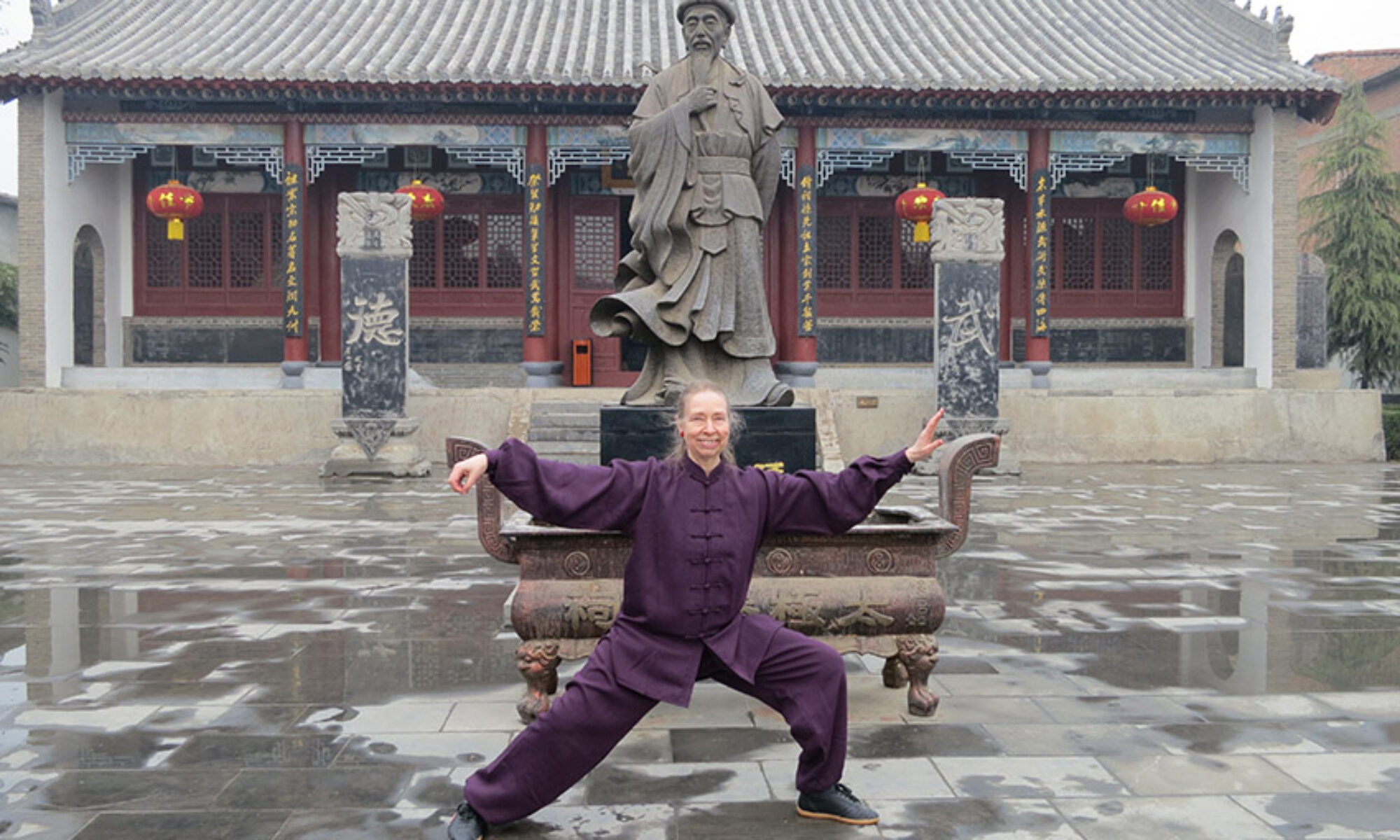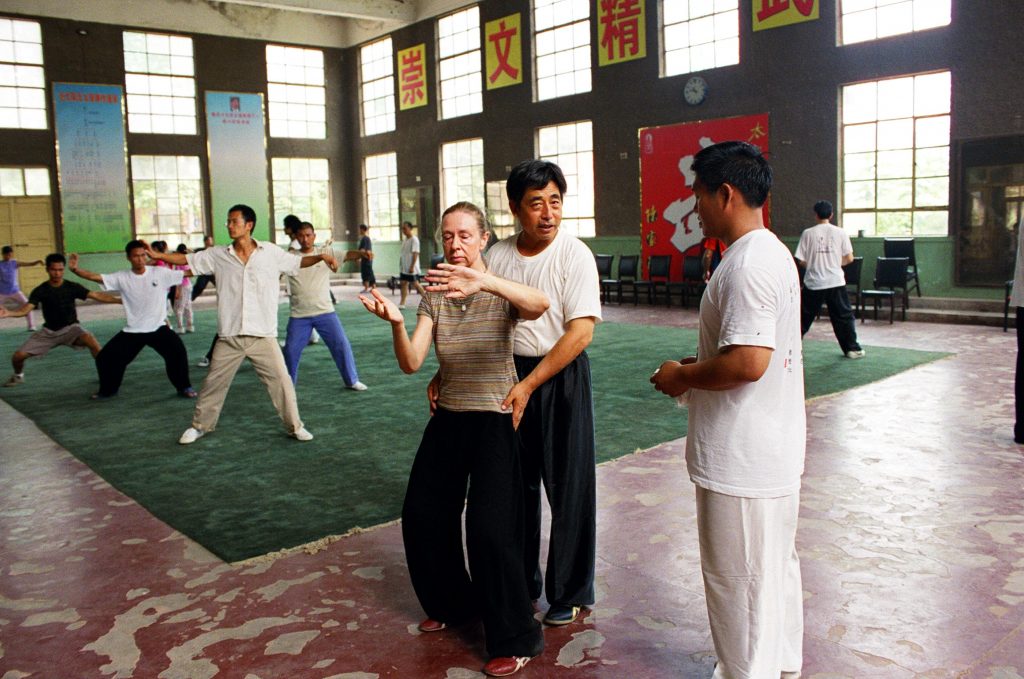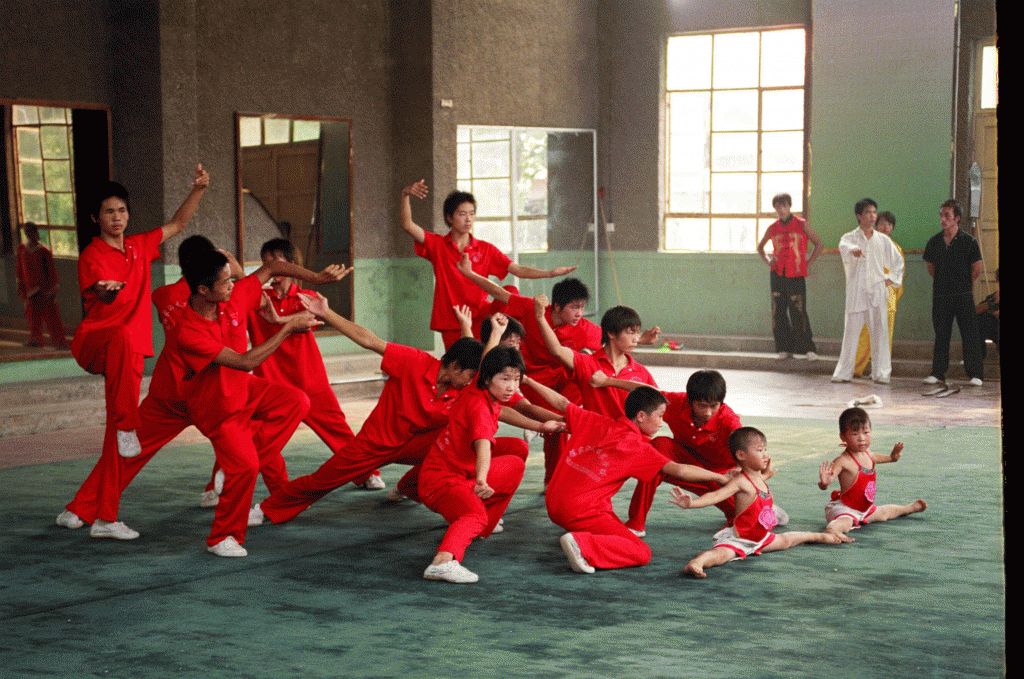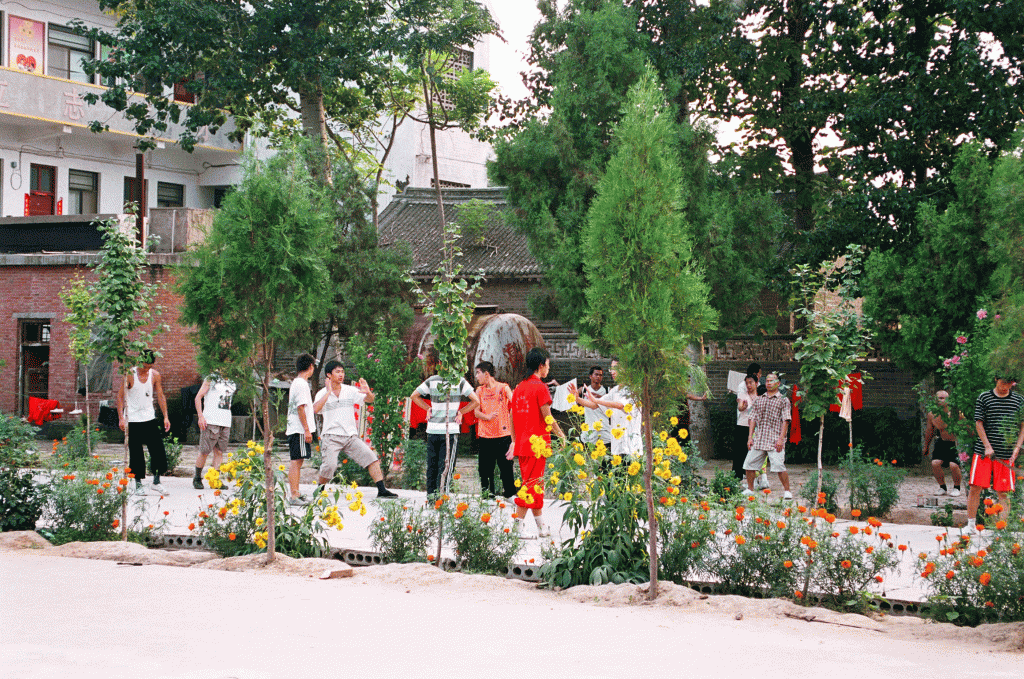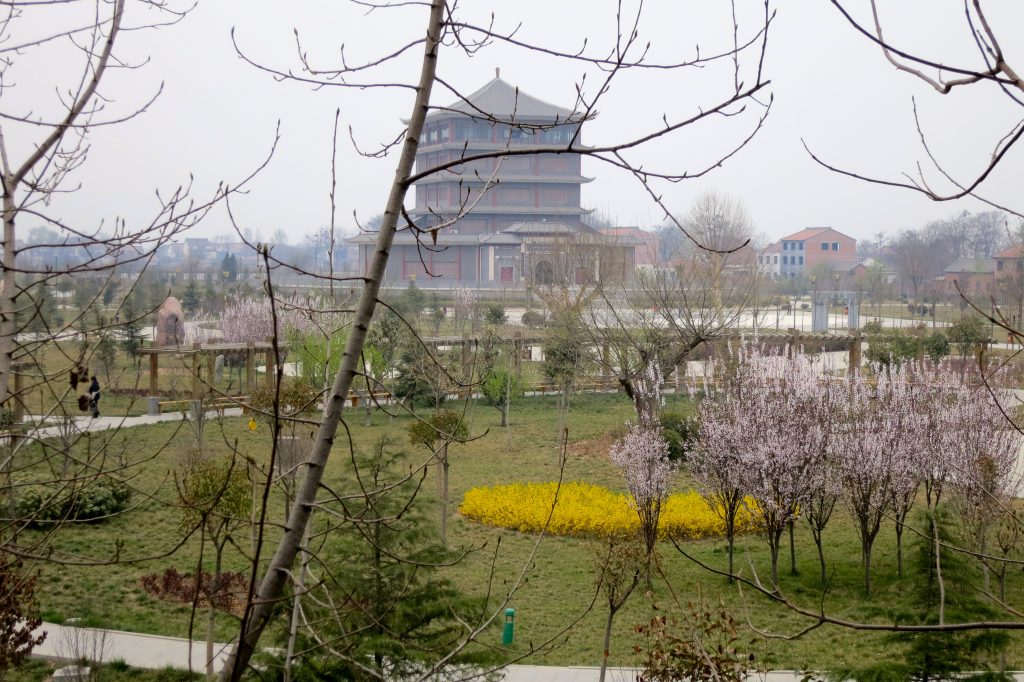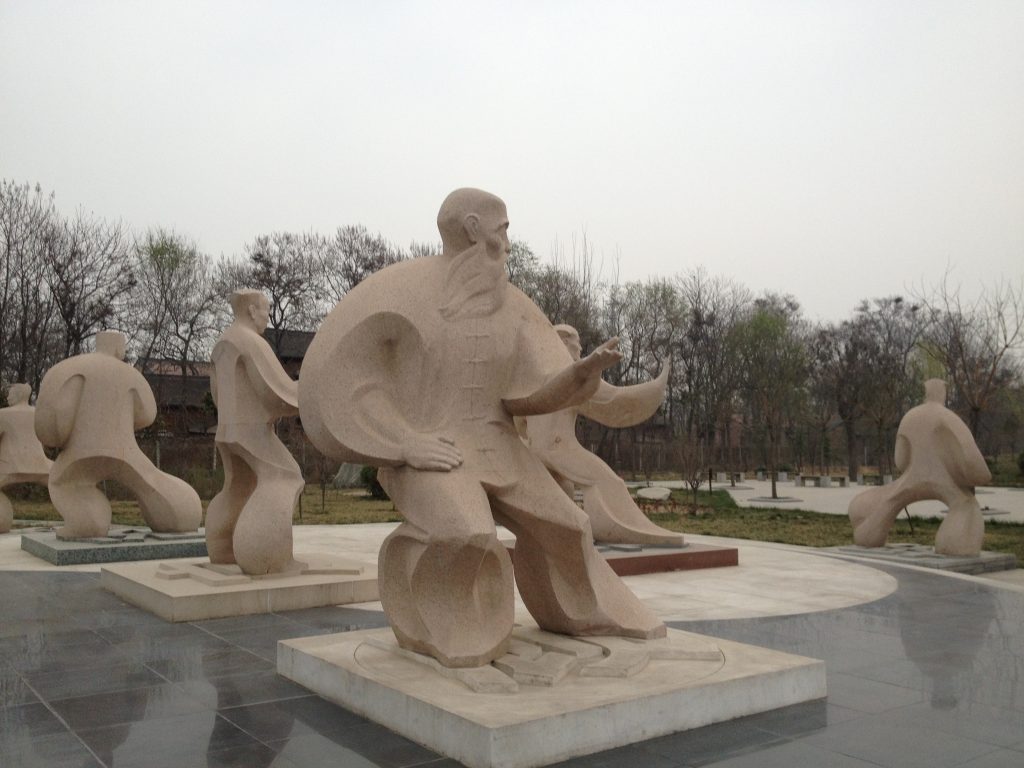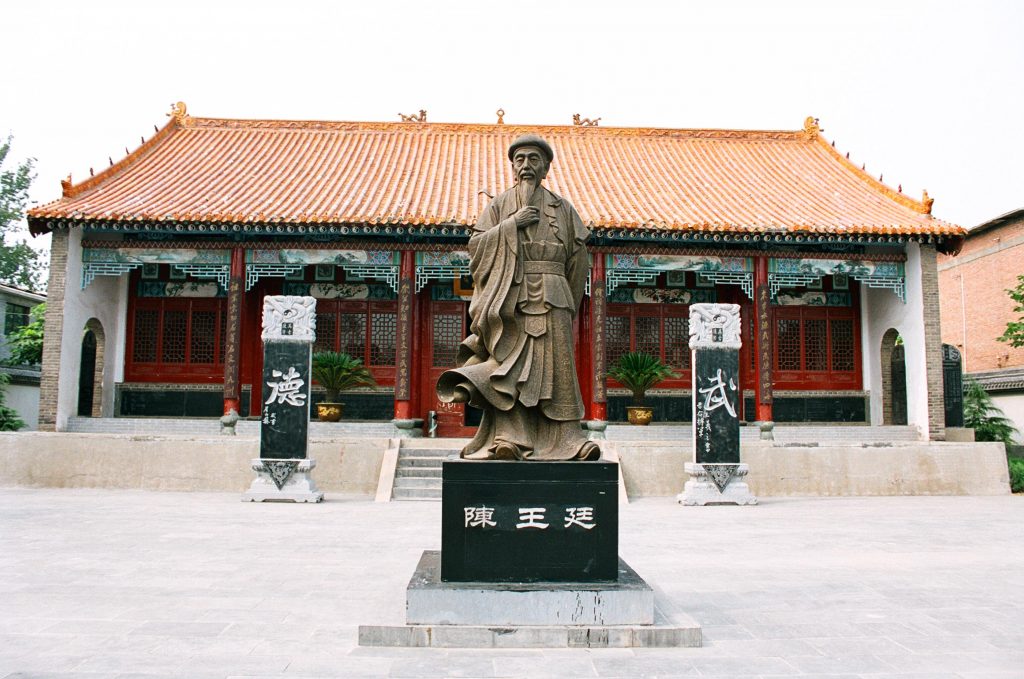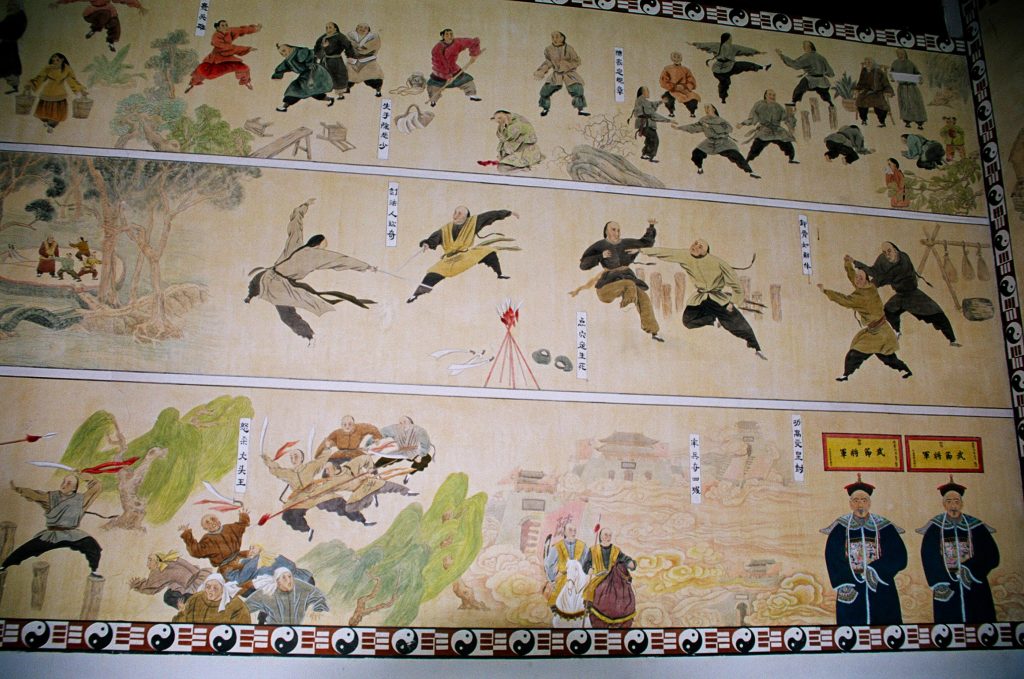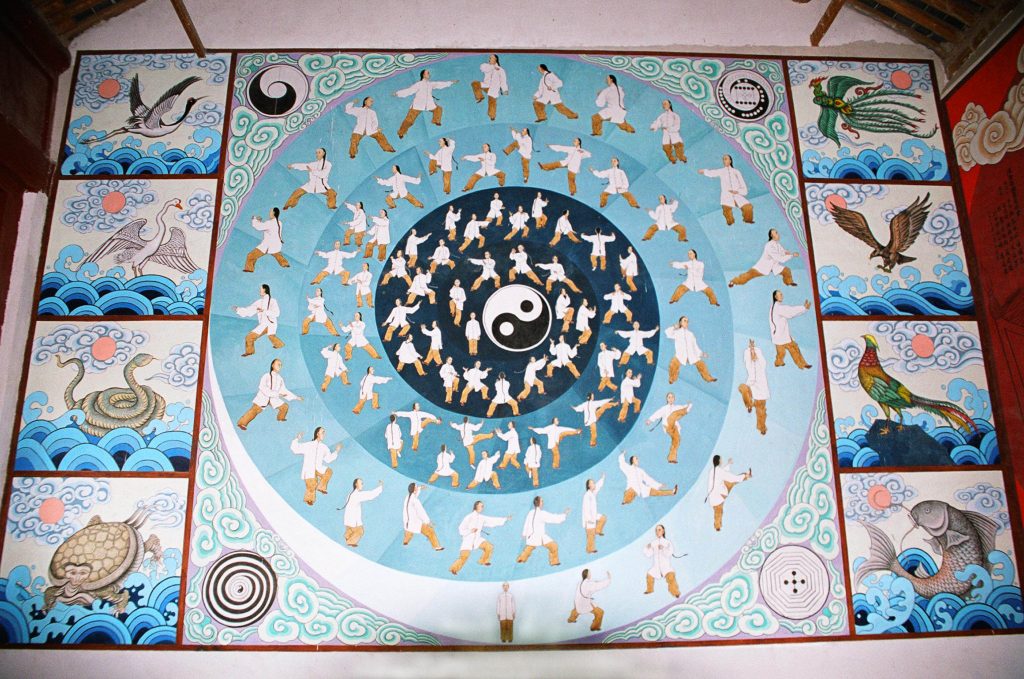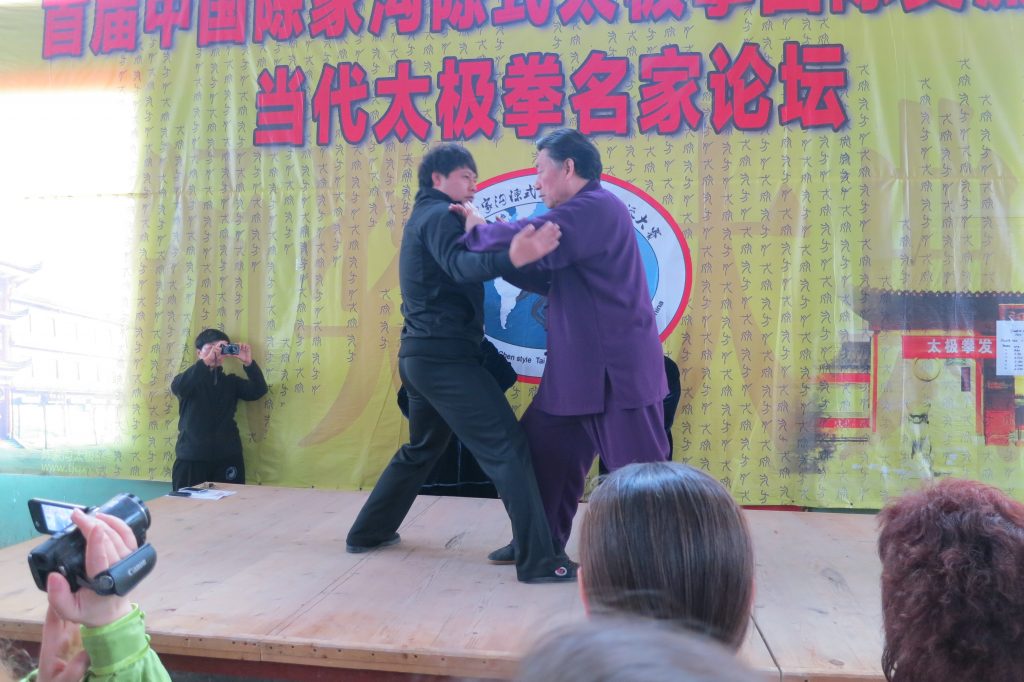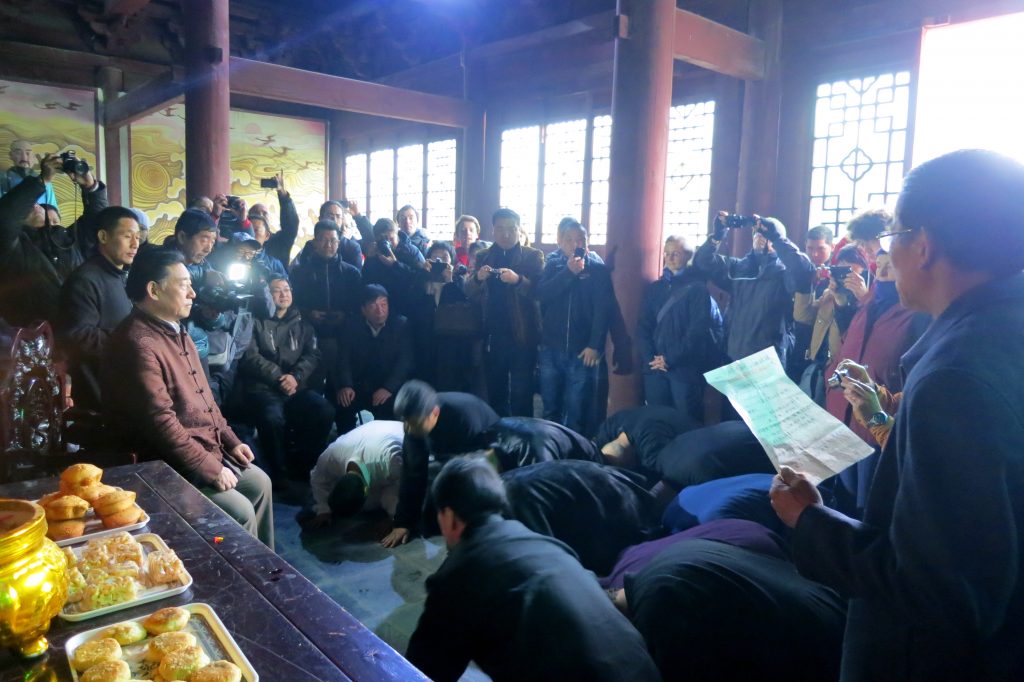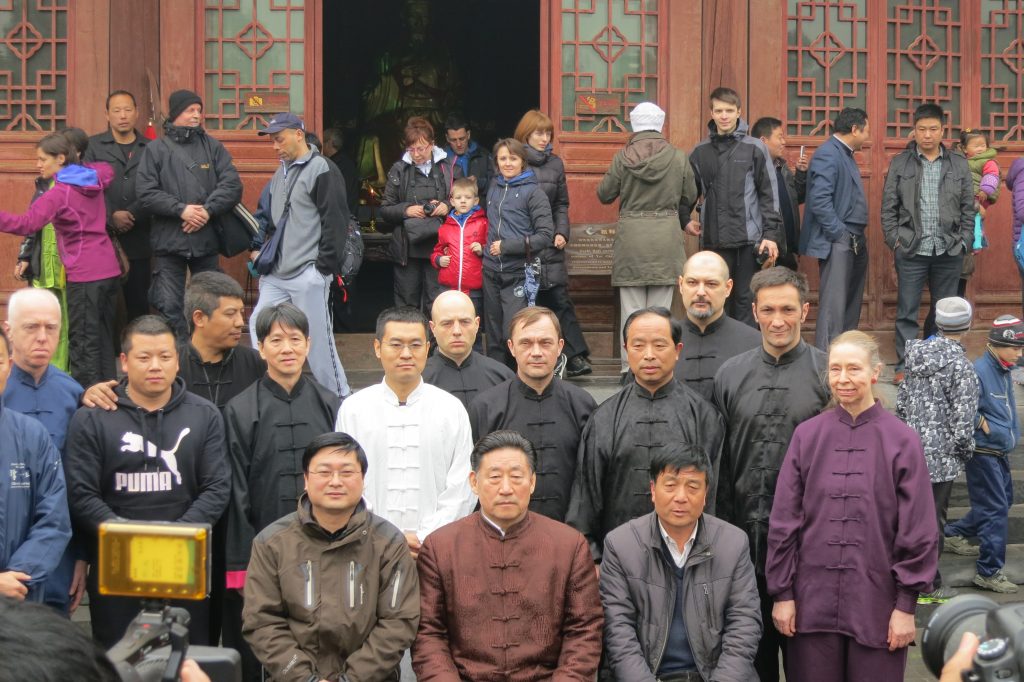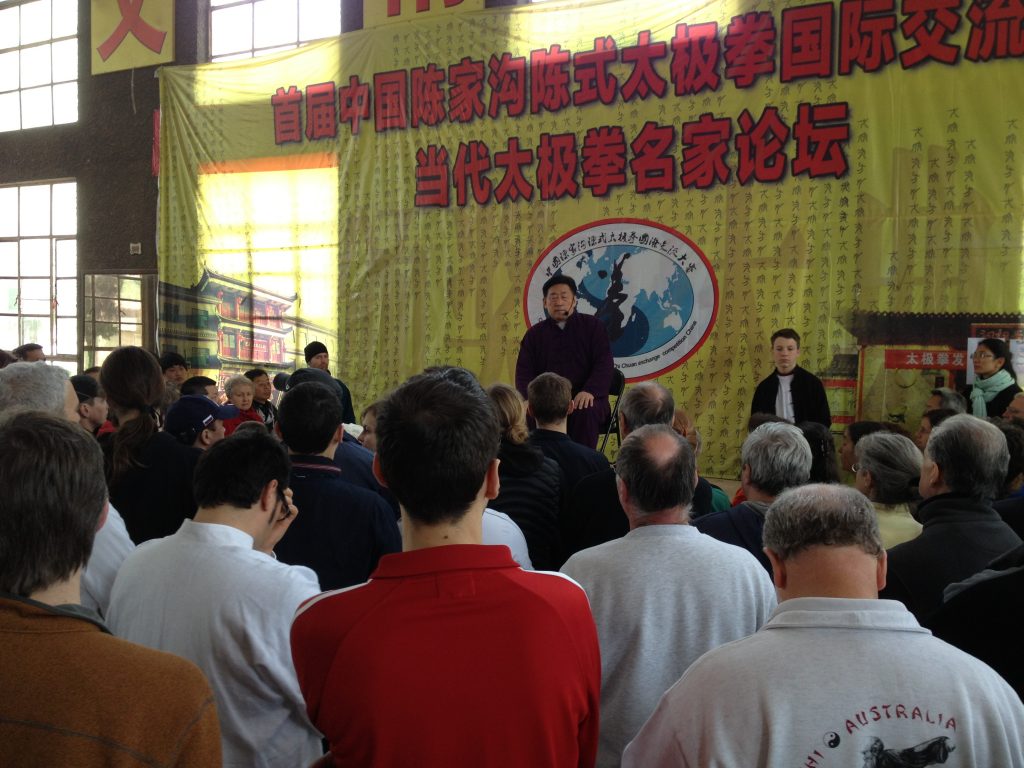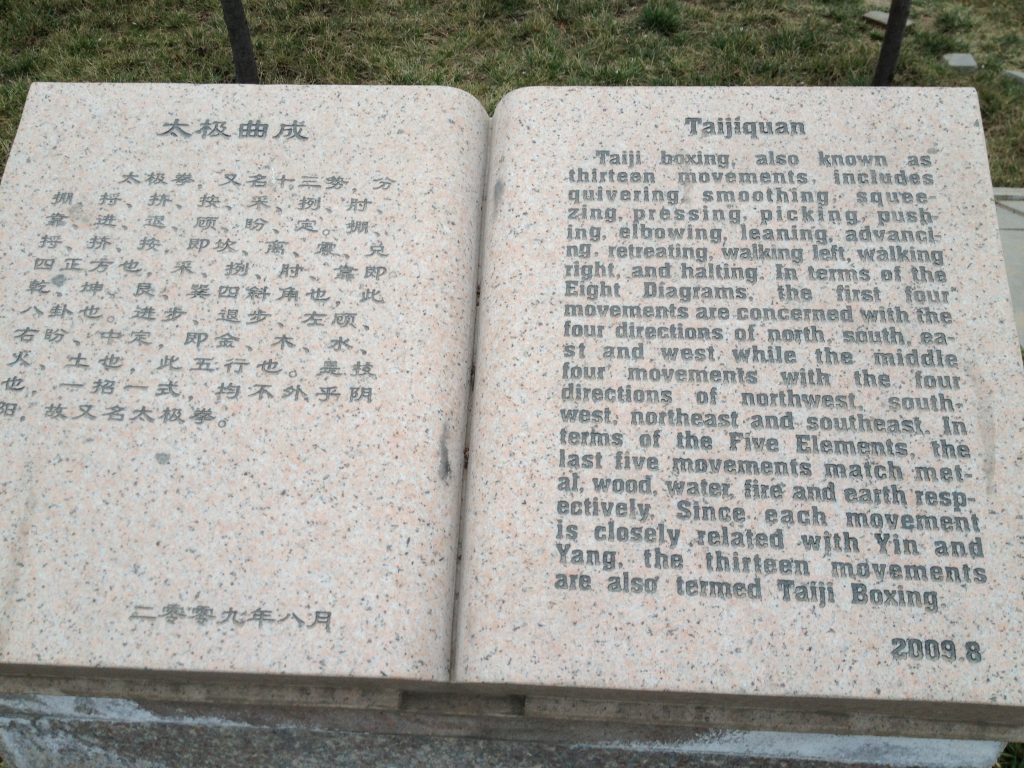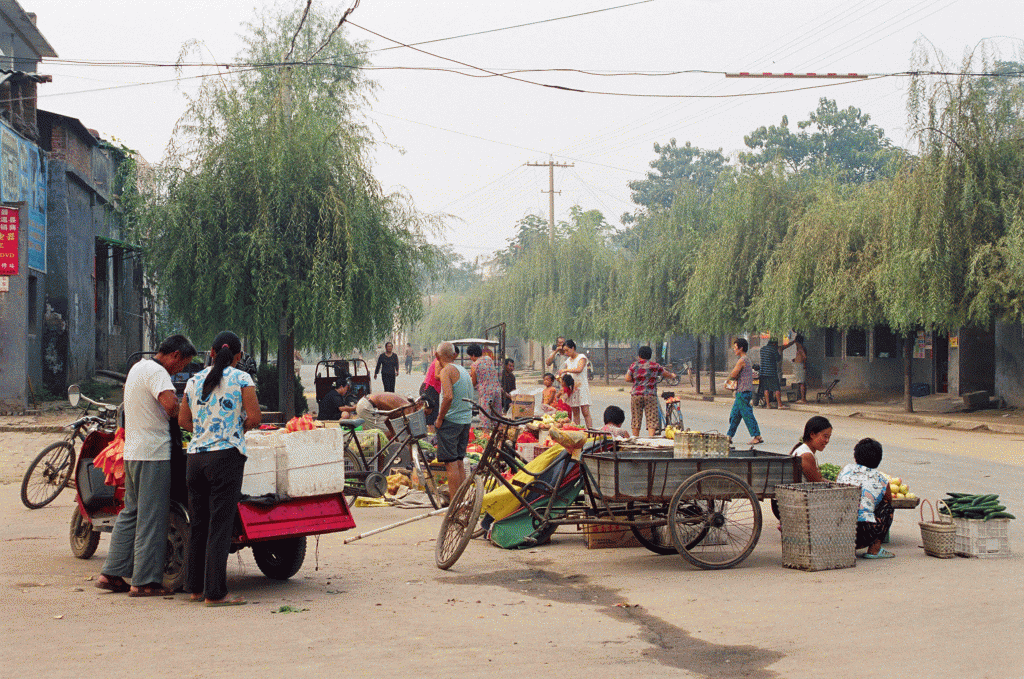Tai chi (Tai Ji or Taijiquan) is an traditional Chinese form of movement that is designed to improve health, fitness, balance and coordination, as well as containing techniques from martial arts. Through warm up exercises, practice techniques and a set series of linked movements the body and mind are both exercised and relaxed.
Chen Taijiquan (tai chi chuan) is the oldest style of tai chi with a direct lineage from the present day back to the Ming period in China. At it’s root Chen-style Taijiquan (Tai Chi Chuan) contains three major Chinese influences, martial arts training and qi gong (breath and movement practice), Traditional Chinese Medicine (TCM) theories of meridians and energy centres in the body, and Daoist philosophy of Yin Yang.
The slow smoothly performed linked movements or routines are an Internal Martial Art, as hidden within each movement is a martial application or technique. Chen Taijiquan has Foundation training, the Qi Gong of tai ji is essential for beginners and all levels to improve health, physical and mental wellbeing. There is also Push hands practice where two people can learn about martial techniques safely working with each other, and at a high level of training there can be sparring practice using martial techniques. In Chen routines together with slow soft movement there are fast explosive moves of internal energy known as ‘Fa Jin’.
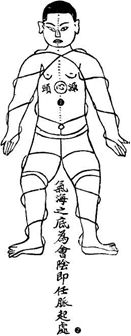
The circular nature of all tai chi movements has a relationship to Traditional Chinese Medicine theories. The circles and spirals of movement echo the natural circulation of fluids and energy movement and storage throughout the body, by means of meridians (channels) and energy centres. The area below the navel, known as the ‘Dantian’ (Elixier Field) is an important ‘qi’ or energy centre for tai chi movement. In Chen Taijiquan theory the spiralling pathway of energy comes up from the ground through the legs to the Dantian, is then generated out from this centre and through to the upper body in movement and martial techniques.
Daoist philosophical theories of yin yang (opposites) is another important element of practice (such as slow and fast, light or heavy) which is particularly evident in the Chen style and can be seen clearly in the more advanced tai chi routines.
The practice of tai chi helps relax the body and calm the mind, and with guidance from the teacher improve posture and strength.
Below are photographs taken (2006 and 2013), on visits to Chenjiagou in Henan Province, China, the Chen family ancestral school and home of Taijiquan. The school and village are a place of pilgrimage visited by hundreds of foreigners who have learnt the Chen style from Chen Grandmasters (who travel and teach around the world), such as the lineage heir of the 19th generation, Grandmaster Chen Xiaowang. Many student want to visit this small village in China where it all began and study the genuine style of Tai Chi.
